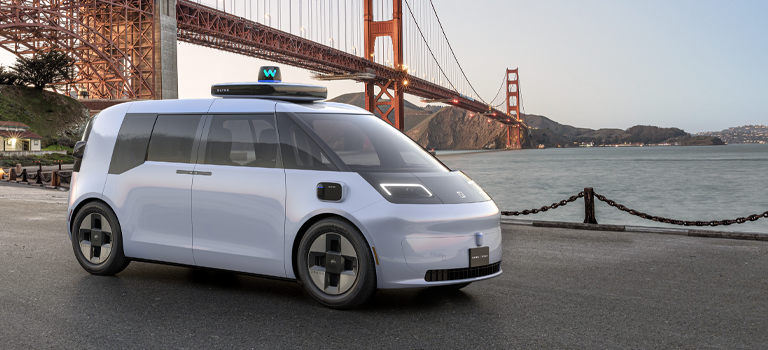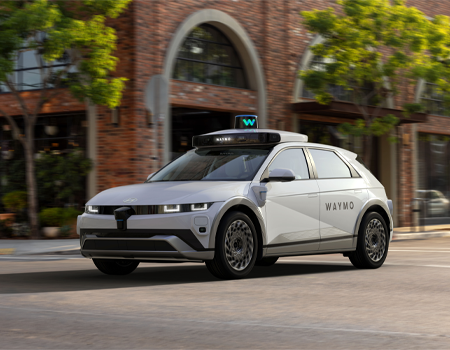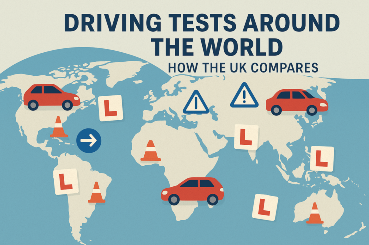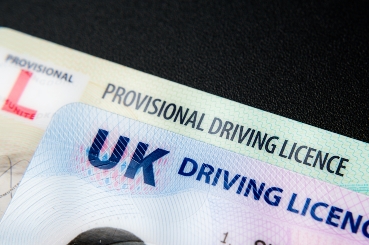The world of transport is rapidly evolving, with one of the most exciting developments being self-driving cars. These vehicles are poised to change the way we travel, making transportation safer, more efficient, and accessible to all.
But what exactly is a self-driving car, and how will they impact our daily lives? Let’s explore the world of autonomous vehicles, including the current developments, challenges, and what the future holds.
What is a Self-Driving Car?
A self-driving car, also known as an autonomous vehicle, is a car that can drive itself using a combination of sensors, cameras, and advanced algorithms. These vehicles are designed to navigate roads, avoid obstacles, and make decisions without the need for human intervention. The ultimate goal is to create fully autonomous cars that can handle every aspect of driving, from start to finish.
Driverless Cars vs Self-Driving Cars
It’s important to note the distinction between driverless cars and self-driving cars. A self-driving car may still require some level of human control or supervision in certain situations, such as inclement weather or complex driving environments.
A driverless car, however, is entirely autonomous, requiring no human input at all. Companies like Waymo are working hard to push towards fully driverless technology, but most “self-driving” cars today still fall short of complete autonomy.

Who is Developing Self-Driving Cars?

Waymo: Leading the Charge
Waymo, a subsidiary of Alphabet (Google’s parent company), is one of the pioneers in the self-driving car industry. Their goal is to create a safer and more accessible transportation system through fully autonomous vehicles. Waymo has made significant strides over the last few years, especially with the introduction of Waymo One, a ride-hailing app that allows users to book rides in autonomous cars.
In cities like Phoenix, Arizona, Waymo has already rolled out driverless taxi services, providing people with a convenient and futuristic way to travel. The company’s focus is on using these vehicles as part of a larger mobility network rather than selling them directly to consumers. For instance, Waymo shuttles people to and from airports, highlighting how the technology is being used to make travel from point A to point B safer and easier. In the foreseeable future, the idea of owning a self-driving car may be less appealing than simply renting one as a driverless taxi.
Ford: Breaking Ground in the UK
In the UK, Ford has also entered the autonomous vehicle scene with the Mustang Mach-E, the first autonomous car approved to operate in the country. In April 2023, regulatory approval was granted for Ford’s BlueCruise technology, which allows hands-free driving on certain motorways. Though it still requires some human oversight, this is a significant step towards more advanced self-driving technology in the UK.
Uber and Tesla: Autonomous Ambitions
Uber has taken the leap into fully autonomous cars in the US, aiming to revolutionise the ride-hailing industry. Tesla, while not quite at full autonomy yet, is also making headlines with its Full Self-Driving (FSD) feature. Tesla’s FSD is far from perfect, but it’s an exciting glimpse into the future of driverless cars.
Hyundai and Waymo: A Fleet Partnership
Hyundai Motor Company and Waymo have announced a multi-year strategic partnership. In the first phase, the companies will integrate Waymo’s sixth-generation fully autonomous technology, known as the Waymo Driver, into Hyundai’s all-electric IONIQ 5 SUV. These vehicles will gradually be added to the Waymo One fleet.
The IONIQ 5s designated for the Waymo fleet will be built at Hyundai Motor Group Metaplant America (HMGMA), the company’s new EV manufacturing facility in Georgia. After assembly, the vehicles will be equipped with Waymo’s autonomous technology. The plan is to produce a large fleet of Waymo-enabled IONIQ 5s over several years to support Waymo One’s expansion. Initial road testing of these vehicles is expected to start by late 2025, with availability for Waymo One riders in the following years.
How Do Driverless Cars Work?
To explain how self-driving cars operate, there are five core levels of autonomy set out by the Society of Automotive Engineers (SAE). Starting at Level 1, which is seen as the most basic, and Level 5 the most advanced.
Level 1:
This is a fairly straightforward affair and is a level of autonomy that has actually been around for quite some time now.
Also included in Level 1 are isolated features, such as radar cruise control and lane-keep assist; the former has been available since the 1990s. These features work through an array of cameras and sensors, but the driver is still there to drive the car.
Level 2:
This is pretty much where we stand today and includes the likes of advanced cruise control functions where the car can take over directional, throttle and brake capabilities.
Thanks to the use of sat nav, this feature can read corners up ahead and brake as necessary on an automatic basis and also keep a set distance behind the car in front. This is also the level of self-driving cars that see such abilities as automated parking.
Level 3:
Referred to as ‘conditional automation’ by the SAE, Level 3 is pretty much where Tesla is at with its Autopilot feature.
This is the next big stage of actual driverless cars, where a function can be applied by the physical driver for the car to enter a mode to have all aspects of driving done for you at certain points – but the driver must be at hand to take back control if required.
Again, refined use of maps, radar and sensors are used in conjunction with environmental data to keep the car doing what it should be doing.
Level 4:
This is an area of driverless cars where the vehicles truly do drive themselves, but have their reach restricted through geofenced areas.
These are also cars that you probably wouldn’t own, but merely ‘borrow’ to get around built-up areas and almost be like the shared pods seen testing in Milton Keynes over the last few years.
Level 5:
Now to the point where a lot of companies are aiming for – fully autonomous vehicles.
Level 5 sees us take the previous step but derestrict its scope of destination, with full driverless capability brought about by hyper-fast algorithms crunching vast amounts of data at all times, making the cars fully sentient to what’s around them.
When Will Self-Driving Cars Be Available?
The development of self-driving cars has progressed significantly since the initial predictions in 2019. While the original timeline was ambitious, the industry has made substantial strides towards achieving fully autonomous vehicles. Here’s an updated overview:
Level 2 (Partial Automation):
Current status: Many modern cars already feature Level 2 capabilities, including adaptive cruise control, lane-keeping assist, and automatic emergency braking.
Future: While Level 2 technology is common, further advancements are expected, such as improved sensor fusion and more sophisticated decision-making algorithms.
Level 3 (Conditional Automation):
Current status: Some manufacturers have introduced limited Level 3 features, allowing drivers to take their hands off the wheel in certain conditions. However, the driver must be prepared to take over at any time.
Future: Level 3 technology is expected to become more widespread in the coming years, with improvements in sensor accuracy and reliability.
Level 4 (High Automation):
Current status: While there have been limited public demonstrations of Level 4 capabilities, widespread commercial availability is still a few years away.
Future: Level 4 cars are likely to become more common in specific, controlled environments, such as highways or designated autonomous zones.
Level 5 (Full Automation):
Current status: Fully autonomous vehicles without any human intervention are still under development and face significant technical and regulatory challenges.
Future: The timeline for widespread adoption of Level 5 cars remains uncertain, but it is expected to be several years away.
Global Market Forecast:
- 2023: The global market for self-driving cars is estimated to be worth billions of dollars, with significant growth projected in the coming years.
- 2035: While the specific figure of 21 million driverless cars by 2035 may be subject to change, the overall trend suggests a significant increase in the adoption of self-driving technology.

What Obstacles Are in the Way?
Despite all the progress, there are still several challenges standing in the way of self-driving cars becoming mainstream.
Safety Concerns:
Ensuring that these vehicles can handle every possible driving scenario without risking passenger safety is still a hurdle. Many self-driving systems are in testing phases, and incidents during development highlight that we’re not there yet.
Job Displacement:
As autonomous vehicles take over roles traditionally filled by human drivers, industries like trucking, taxi services, and delivery could see significant job losses.
Cybersecurity Risks:
With cars becoming more connected and reliant on software, the risk of hacking and data breaches becomes a real concern. Protecting the privacy and security of users is a major challenge for developers.
Mobile Coverage:
One such factor is that in a place like the UK, mobile coverage can be hit-and-miss in places, especially in the countryside. This, as this article from The Guardian suggests, could be an issue for driverless car technology which depends so much on fast and reliable mobile data.
Self-Driving Car Ethics
Now, this is an interesting, not commonly thought of proposition: can a driverless car be ethical?
As this article delves into, in the unlikely circumstance of a driverless car needing to avoid an incident, what manoeuvres should be programmed into the software from a moral standpoint? Touched upon in the same article, the ‘Trolley Problem’ could stand out as a relevant example to driverless cars if they were to make a decision based on an upcoming collision or incident.
While most will just hope a self-driving car will in general keep the occupants and those outside of the vehicle safe, what if there was a decision to be made where the car had to choose between hitting numerous pedestrians or sacrificing the single occupant of the vehicle to save the many?
Perhaps more pertinent would be, would a motorist be willing to enter one such vehicle knowing that a decision might have to be made on their behalf?
To avoid these types of dilemmas, you might say the person at the wheel could take control back from the car, but, as driverless cars get more widespread, might their occupants become less aware of their environment? It’s certainly one to think about.
Pros and Cons of Self-Driving Cars
Advantages of Self-Driving Cars:
Increased Safety: Autonomous vehicles can eliminate human error, which is responsible for the majority of road accidents.
Accessibility for All: People who are unable to drive, such as those with disabilities, would benefit greatly from self-driving cars.
Improved Traffic Efficiency: Self-driving cars can communicate with each other and make better driving decisions, reducing congestion.
Disadvantages of Self-Driving Cars:
Safety Issues: Until fully perfected, the technology could still malfunction or fail in certain scenarios, leading to accidents.
Job Displacement: As mentioned, many jobs in the transport sector are at risk of being replaced by automation.
Cybersecurity and Privacy Concerns: Like any technology, self-driving cars are susceptible to hacking, which could compromise user safety and data privacy.
What Cars Are Self-Driving?
Several cars on the market today offer self-driving or advanced driver assistance features. These include:
– Waymo One: The leader in autonomous taxis.
– Tesla: With its Full Self-Driving (FSD) option, Tesla is pushing towards a driverless future.
– Ford Mustang Mach-E: The first autonomous vehicle to hit UK roads.
– Mercedes-Benz EQS: Equipped with advanced driver assistance technology, though not fully autonomous.
– Audi A8: Offers Traffic Jam Pilot, an automated system designed for specific driving conditions.
Are Self-Driving Cars the Future?
In the UK, self-driving cars are set to become more commonplace by 2026, following the passing of the Automated Vehicles Act. This law paves the way for fully autonomous vehicles to hit the roads. In the US, states like Arizona and California are already trialling autonomous taxis with companies like Waymo and Uber leading the way.
While it may still take a few more years before self-driving cars are a common sight, the future is certainly moving in that direction. With advancements in safety, technology, and regulatory frameworks, the day when you can summon a driverless taxi to your doorstep may not be far away.
Self-driving cars have the potential to revolutionise transportation, making it safer, more efficient, and more accessible. Companies like Waymo, Ford, and Tesla are at the forefront of this innovation, but challenges such as safety concerns, job displacement, and cybersecurity risks remain.
As technology continues to improve and regulations evolve, self-driving cars will likely become a key part of our transport infrastructure, offering an exciting glimpse into the future of travel


















